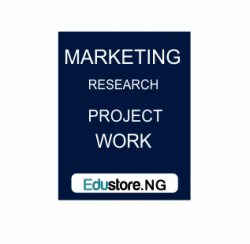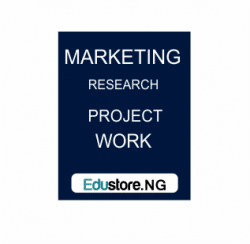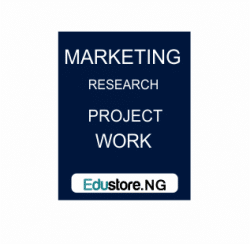Artificial Intelligence and Creative Designing in the Advertising Space
Abstract
This study investigated the impact of Artificial Intelligence (AI) on creative design in the advertising industry. A quantitative survey research design was adopted, and data were gathered through a structured questionnaire administered to a sample of 120 respondents. SPSS27 was utilized for data presentation and analysis, while the hypotheses were tested using a t-test. The findings revealed significant insights into the effectiveness and efficiency of AI-generated designs compared to traditional human-generated designs in advertising campaigns. The results indicated a notable difference in the impact of AI on creative designing, suggesting that AI-driven approaches offered distinct advantages over traditional methods. Additionally, the study found that the integration of AI into the creative process had the potential to significantly improve advertising campaign performance. In conclusion, the study underscored the transformative role of AI in the advertising landscape, highlighting its potential to revolutionize creative design processes and enhance campaign effectiveness. The findings suggested that advertising professionals stood to benefit from embracing AI technologies to optimize their creative workflows and drive better outcomes. Based on these insights, several recommendations were proposed to guide practitioners in leveraging AI effectively in advertising strategies. These included investing in AI education and training programs, implementing ethical guidelines for AI usage, and exploring innovative applications of AI in niche advertising markets. Overall, this study contributed to the growing body of literature on AI in advertising by providing empirical evidence of its impact on creative redesign campaign performance. By adopting a quantitative survey approach and employing rigorous statistical analysis, the study offered valuable insights for both academia and industry practitioners. Moving forward, further research is recommended to explore the long-term implications of AI in advertising and to address emerging challenges and opportunities in this evolving field.
CHAPTER ONE
INTRODUCTION
Background to the Study
In recent years, the advertising industry has undergone a profound transformation with the advent of Artificial Intelligence (AI) technologies (Frey & Osborne, 2021). AI has revolutionized various aspects of advertising, including targeting, content creation, and campaign optimization (Desai & Vidyapeeth, 2021). These advancements have led to significant improvements in efficiency and effectiveness within the industry. One notable area where AI has made significant strides is in creative design (Makridakis, 2017). Traditionally, creative designing in advertising relied heavily on human intuition, creativity, and experience (Chaffey & White, 2022). However, with advancements in AI algorithms and machine learning techniques, computers are increasingly capable of generating innovative and impactful designs (Davenport et al., 2020).
The integration of AI in creative design brings forth numerous benefits to the advertising industry (Mogaji et al., 2020). AI-powered tools can analyze vast amounts of data to identify trends, preferences, and patterns, enabling marketers to create more targeted and personalized advertisements (Kannan & Li, 2017). Additionally, AI algorithms can generate creative content at scale, reducing the time and resources required for manual design processes (Du et al., 2020). This not only enhances efficiency but also allows for more experimentation and iteration in the creative process (Tiautrakul & Jindakul, 2019). As a result, advertisers can produce a greater volume of high-quality content tailored to diverse audiences.
Moreover, AI-driven creative designing offers opportunities for increased relevance and engagement (Huang & Rust, 2018). By analyzing user behaviour and preferences, AI algorithms can tailor advertisements to resonate with specific target audiences (Qin & Jiang, 2019). This personalized approach increases the likelihood of capturing audience attention and driving desired actions, such as clicks or purchases (Nair & Gupta, 2021). Furthermore, AI can optimize creative elements in real time based on performance data, maximizing the effectiveness of advertising campaigns (De Bruyn et al., 2020). This dynamic adaptation ensures that advertisements remain compelling and relevant in an ever-changing digital landscape.
However, despite the potential benefits, the integration of AI in creative designing also poses challenges and considerations (Mittelstadt et al., 2020). One concern is the ethical implications of AI-generated content, particularly regarding privacy and manipulation (Hoofnagle et al., 2019). As AI algorithms become more sophisticated, there is a risk of perpetuating biased or misleading information in advertisements (Smith et al., 2021). Additionally, there may be resistance from creatives who fear displacement by AI technology (Steimers & Schneider, 2022). Balancing the use of AI with human expertise and oversight is crucial to maintaining ethical standards and creative integrity in advertising (Lewandowska et al., 2019).
In essence, the integration of AI in creative designing represents a significant advancement in the advertising industry (Vlačić et al., 2021). AI-powered tools offer unprecedented capabilities for data analysis, content generation, and campaign optimization (Wirth, 2018). While there are challenges and considerations to navigate, the potential benefits of AI in enhancing creativity, efficiency, and effectiveness are undeniable (Van Esch & Black, 2021). As AI technologies continue to evolve, advertisers must adapt their strategies and practices to leverage the full potential of AI in creative design while addressing ethical concerns and ensuring human oversight (Mogaji et al., 2021).
Statement of the Problem
The integration of Artificial Intelligence (AI) in creative designing within the advertising industry has undoubtedly brought about significant advancements. However, amidst the excitement surrounding AI’s potential, there remain several gaps and challenges that need to be addressed.
Firstly, while AI algorithms have shown promise in generating innovative designs, there is a lack of comprehensive understanding regarding their effectiveness and impact compared to human-generated designs (Mogaji et al., 2020). This raises questions about the quality and authenticity of AI-generated content and its ability to resonate with target audiences (Qin & Jiang, 2019). Addressing this gap requires empirical research comparing the performance and reception of AI-generated designs versus those created by human designers.
Secondly, there is a need to explore the ethical implications of AI in creative designing, particularly concerning issues such as privacy, bias, and transparency (Mittelstadt et al., 2020). As AI algorithms become more autonomous and data-driven, there is a risk of perpetuating harmful stereotypes or misleading information in advertisements (Hoofnagle et al., 2019). Moreover, the use of AI-generated content raises questions about ownership and intellectual property rights (Van Esch & Black, 2021). Research in this area can help inform ethical guidelines and best practices for the responsible use of AI in advertising.
Additionally, while AI technologies offer opportunities for personalization and optimization, there is a need to better understand how they can be integrated into existing creative workflows and practices (Davenport et al., 2020). Many advertising professionals may lack the technical expertise or resources to fully leverage AI tools effectively (Tiautrakul & Jindakul, 2019). Bridging this gap requires research into user-friendly AI solutions and strategies for training and upskilling advertising practitioners.
In summary, the integration of AI in creative design presents both opportunities and challenges for the advertising industry. Addressing gaps in understanding effectiveness, navigating ethical considerations, and optimizing integration processes are crucial steps in harnessing the full potential of AI for creative innovation in advertising.
Objectives of the Study
This research aims to achieve the following objectives:
- To investigate the impact of AI on creative design in the advertising industry.
- To evaluate the effectiveness of AI-generated designs compared to human-generated designs.
- To identify best practices and guidelines for integrating AI into the creative process in advertising.
Research Questions
In line with the specific objectives, this study addresses the following research questions:
- How does AI influence the creative designing process in advertising?
- What are the comparative effectiveness and efficiency of AI-generated designs versus human-generated designs in advertising campaigns?
- What are the key considerations and best practices for incorporating AI into the creative workflow in advertising?
Hypotheses
Based on the research questions, the following hypotheses are proposed:
Null Hypotheses(H0):
- There is no significant difference in the impact of AI on creative designing compared to traditional methods.
- AI-generated designs are equally as effective and efficient as human-generated designs in advertising campaigns.
- The integration of AI into the creative process does not significantly improve advertising campaign performance.
Alternative Hypotheses(H1):
- There is a significant difference in the impact of AI on creative designing compared to traditional methods.
- AI-generated designs are not equally as effective and efficient as human-generated designs in advertising campaigns.
- The integration of AI into the creative process does not significantly improve advertising campaign performance.
Significance of the Study
This study carries substantial implications for both academia and industry, offering valuable insights into the role of Artificial Intelligence (AI) in creative designing within the advertising domain. By delving into this subject, it contributes to the advancement of both theoretical understanding and practical applications. Through empirical research and analysis, it seeks to elucidate how AI technologies can influence and augment the creative processes within advertising.
Moreover, the findings of this study hold the potential to provide guidance and direction for advertising professionals, marketers, and AI developers alike. By offering a deeper understanding of how AI can be effectively harnessed in the creative process, it equips practitioners with the knowledge and insights needed to optimize their strategies and workflows. This, in turn, can lead to enhanced creative outcomes and increased campaign success.
For academia, this research contributes to the body of knowledge surrounding the intersection of AI and advertising. By exploring the nuances of AI-driven creative designing, it expands upon existing theories and frameworks, providing a richer understanding of the dynamics at play. This, in turn, lays the groundwork for future research endeavours and academic discourse in this rapidly evolving field.
In the industry, the insights derived from this study can serve as a valuable resource for informing strategic decision-making and resource allocation. Advertising professionals can leverage the findings to refine their approaches to creative development, ensuring that they are making the most effective use of AI technologies. Likewise, marketers can gain valuable insights into how AI can be leveraged to enhance the effectiveness of their campaigns, leading to greater impact and return on investment.
Furthermore, AI developers stand to benefit from the findings of this research by gaining a deeper understanding of the specific needs and challenges faced by advertising professionals. Armed with this knowledge, they can tailor their AI solutions to better meet the demands of the industry, ultimately driving innovation and advancement in the field of creative design.
In essence, this study serves as a bridge between academia and industry, offering valuable insights that have the potential to inform and shape practices within the advertising domain. By shedding light on the role of AI in creative designing and its implications for campaign success, it contributes to the ongoing evolution of the advertising industry in an increasingly digital and data-driven era.
Scope of the Study
This research focuses specifically on the use of AI in creative designing within the advertising industry. It encompasses various forms of advertising, including print, digital, and multimedia campaigns. The study does not delve into broader applications of AI in marketing or advertising analytics but rather concentrates on the creative aspect.
Limitations to the Study
Several limitations were encountered during this study. Firstly, due to time and resource constraints, the research may not cover every aspect of AI in creative design comprehensively. Additionally, the generalizability of findings may be limited by the specific context and sample used in the study. Furthermore, the rapidly evolving nature of AI technology means that some aspects discussed in this research may become outdated over time.
Operational Definition of Terms
To ensure clarity and consistency, the following terms are defined within the context of this study:
Artificial Intelligence (AI): Refers to the simulation of human intelligence processes by machines, particularly computer systems.
Creative Designing: The process of conceptualizing and developing visually appealing and persuasive content for advertising purposes.
Advertising Industry: The sector comprising businesses and professionals involved in creating, distributing, and managing advertisements to promote products, services, or ideas.
Machine Learning: A subset of AI that enables systems to learn from data and improve performance without being explicitly programmed.
Effectiveness: The degree to which AI-generated designs achieve desired objectives and outcomes in advertising campaigns.
Efficiency: The ability of AI to streamline and optimize the creative designing process, reducing time and resource requirements.
Integration: The incorporation of AI technologies into existing creative workflows and practices within the advertising industry.
Campaign Performance: The overall success and impact of advertising initiatives, typically measured by key performance indicators such as reach, engagement, and conversion rates.
REFERENCES
- Van Esch, P., & Black, J. S. (2021). Artificial Intelligence (AI): Revolutionizing Digital Marketing. Australasian Marketing Journal (Amj), 29(3), 199–203. https://doi.org/10.1177/18393349211037684
- Vlačić, B., Corbo, L., Costa e Silva, S., & Dabić, M. (2021). The evolving role of artificial intelligence in marketing: A review and research agenda. Journal of Business Research, 128, 187–203. Elsevier Inc.
- Wirth, N. (2018). Hello marketing, what can artificial intelligence help you with? International Journal of Market Research, 60(5), 435–438. https://doi.org/10.1177/1470785318776841
- Yau, K. A., Saad, N. M., & Chong, Y. (2021). Artificial Intelligence Marketing (AIM) for Enhancing Customer Relationships. Applied Sciences, 11(18), 8562. https://doi.org/10.3390/app11188562
- Yin, R. K. (2018). Case Study Research and Applications: Designs and Methods (6th ed.). Los Angeles: Sage Publications.
- For Reference Only: Materials are for research, citation, and idea generation purposes and not for submission as your original final year project work.
- Avoid Plagiarism: Do not copy or submit this content as your own project. Doing so may result in academic consequences.
- Use as a Framework: This complete project research material should guide the development of your own final year project work.
- Academic Access: This platform is designed to reduce the stress of visiting school libraries by providing easy access to research materials.
- Institutional Support: Tertiary institutions encourage the review of previous academic works such as journals and theses.
- Open Education: The site is maintained through paid subscriptions to continue offering open access educational resources.






